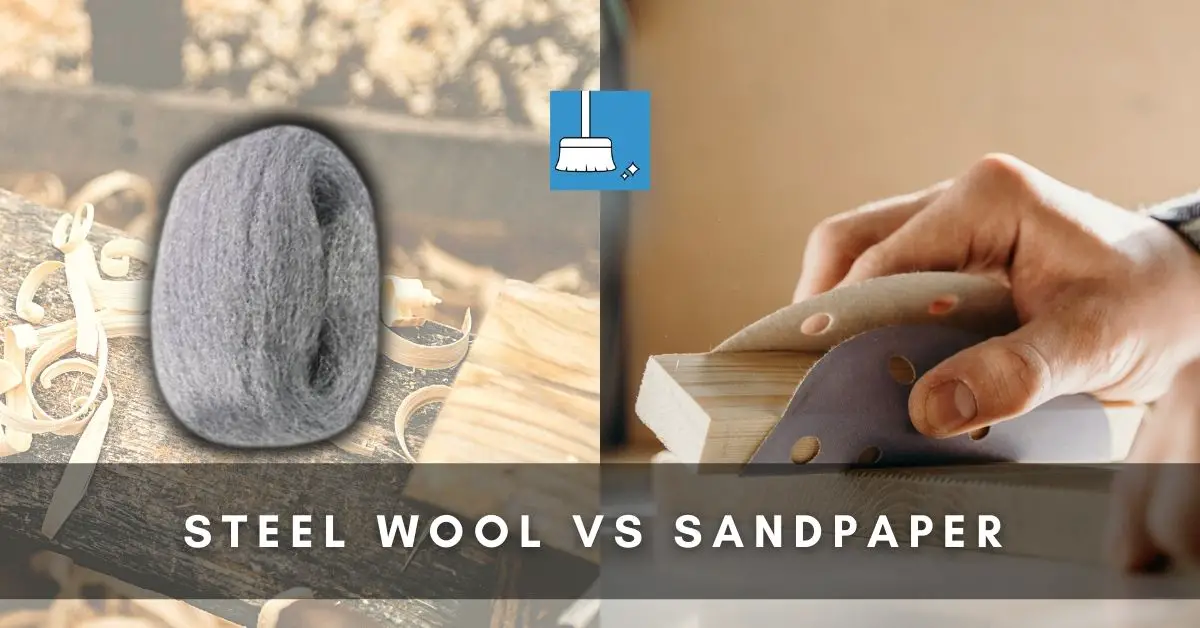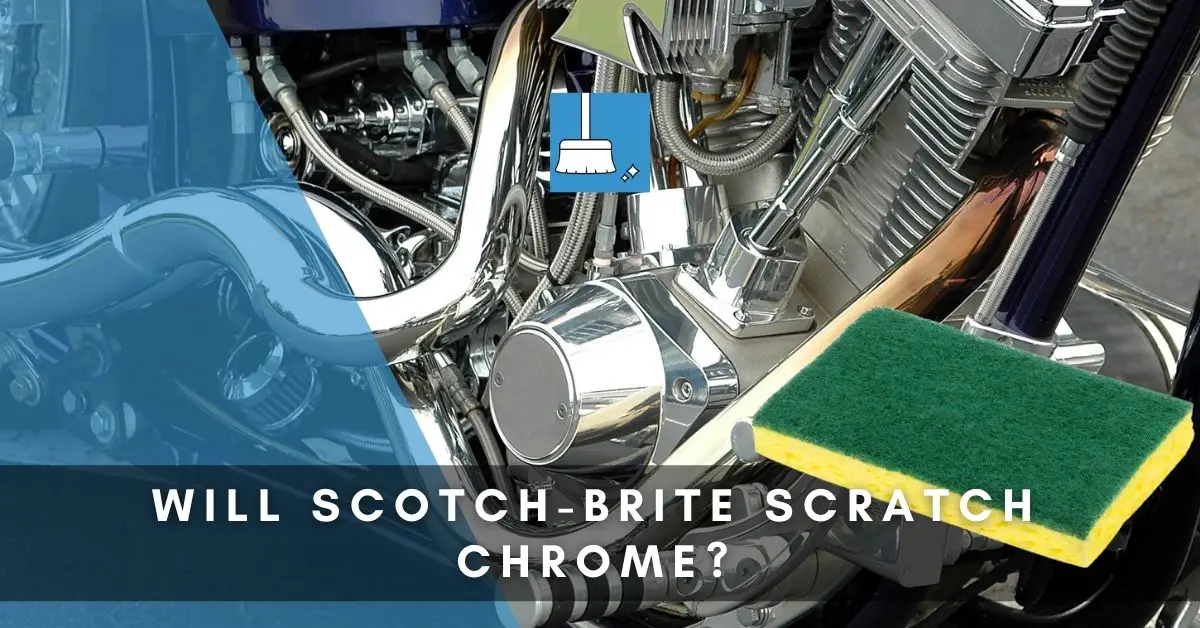Steel wool and sandpaper are both abrasives but do they perform similarly? Can one replace the other? Steel wool is often used for professional cleaning and can even clean glass perfectly without leaving a scratch, can sandpaper be used for this too?
Sandpaper is popular for woodworking. We use it to sand, buff, and polish wood. Since steel wool is also abrasive and can be a tempting option for using on wood. But can you use it?
We will be answering all these questions as we compare steel wool and sandpaper in this article focusing on their similarities, differences, strengths, and weaknesses.
Steel Wool Vs Sandpaper
Steel wool is an abrasive used for cleaning, polishing, and sanding. It comes in varying grades of abrasion and some are fine enough to use on glass. Sandpaper is also an abrasive good for cleaning, polishing, and sanding.
It is mostly used for smoothing wood or metal and preparing it for painting or finishing.
Surprisingly sandpaper can also be used to clean glass. Sandpaper also comes in different grades of abrasion so there are super fine grades that remove hard water stains and grime buildup from glass objects without scratching them.
In woodworking, it is necessary to sand between coats. It removes the dirt and grime that might have settled into the finish before another coating and also provides good adhesion between layers of finish.
Both steel wool and sandpaper can be used to do this sanding but some prefer one to the other based on a few reasons we will be highlighting.
1- Use on Different Finishes
First, steel wool is better used on oil-based finishes and not water-based. (Source) Sandpaper on the other hand works very well on both.
Steel wool has the tendency to rust when wet which makes it a no-go area when sanding water-based finishes. You will have to change often.
2- The Problem of Rust
The steel wool will also leave particles on your wood which will rust and destroy the finish later on. With sandpaper, you don’t have this problem.
Steel wool itself also rusts over time and you have to take care of this rusting, but sandpaper doesn’t rust.
3- Accessibility
Steel wool however is good for sanding contours, edges, corners, and hard-to-reach places because you can form any shape with it. It is flexible. This is where it has an advantage over sandpaper as sandpaper can be difficult to work with.
4- The Extra Hassle
Steel wool also leaves fine wool dust on wood after sanding and you have to clean this off before coating. This is extra stress that you don’t have to worry about if you use sandpaper.
5- Choosing the Right Grade
Steel wool comes in grades and only the finer grades are good for sanding. And when it comes to professional cleaning, steel wool is a better option. It will remove stains, and rust even from delicate objects without leaving scratches.
Sandpapers come in different types but the most popular are silicon carbide and aluminum oxide. They are both great for sanding most kinds of wood, including unfinished wood, but produce different results.
The most commonly used however is aluminum oxide sandpaper. So you should go with this if you aren’t sure.
How to Use Steel Wool for Sanding?
board.YOU’LL NEED
1- #0000 steel wool
2- Flat block
STEPS
STEP 1: Flatten out your steel wool. Steel wool comes in balls or flat rolls but sanding it that way with your hand won’t give you the result you want, especially if the wood has grain lines.
You can only use it folded or as a ball if you are sanding hard-to-reach places and edges. It will also be difficult to get even pressures that way and your wood won’t be sanded properly and evenly. So flatten it out first.
STEP 2: Now secure it around a flat block. You can hold it in place or tape it at the back of the block.
STEP 3: Use the block to sand your wood in straight lines, not going back and forth. From top to bottom without stopping until the whole wood is sanded. Try to follow the grain lines if there are any.
STEP 4: Clean the dust and steel wool particles on the wood so they won’t get into the finish. Run your hand on the wood to see if it’s now smooth. If there are areas yet to be smooth, repeat the process.
Steel wool also creates adhesion so the coat stays better. Steel wool can also be used to smooth the wood out before the final finish and also to polish the wood to a smooth and shiny finish.
Will Steel Wool Take Off Paint?
You can use steel wool to remove paints from wood surfaces such as floors, furniture, and even other surfaces.
1- Paint Stains
The paint stain can be removed completely from the surface by following these steps:
STEP 1: Wet the steel wool with paint removal first.
STEP 2: Then gently rub the spots until the paint dissolves.
STEP 3: Then wipe with a clean damp cloth.
2- Sanding Between Layers
Steel wool is also used to sand oil-based paints between layers. You are not removing all the paint, just enough sanding to add another layer. You do this without wetting the steel wool with paint removal.
CAUTION: Don't use steel wool to sand water-based paints. Particles will be left in the object that will eventually rust.
3- Reducing Gloss on the Paint Finish
If you have furniture that is too glossy in your opinion, steel wool can be used to sand it until it becomes less glossy.
How Do You Refinish Wood with Steel Wool?
If your wood is finished but you notice it is rough when you run your hand on it, possibly dust could have settled into the finish when it was drying so you have to refinish it.
You can do this with steel wool but it takes time and energy. It is however a simple process and you can’t do it wrong if you follow these easy steps:
YOU’LL NEED
1- Sandpaper
2- Mineral spirits
3- Wood wax
4- Steel wool
STEPS
STEP 1: Get a flat block and wrap 400 grit sandpaper around it. You need it to remove the dust and particles from the wood finish and even out the surface.
Don’t use anything more or less than 400 grit.
STEP 2: Now pour some mineral spirits on the wood. Not too much, you don’t want it running over the furniture onto the floor, but be generous with it.
STEP 3: Take the flat block with sandpaper and sand the wood. Go back and forth until you do the whole wood.
Make sure you do it well. It may take more time than you think. Don’t forget the edges.
STEP 4: Now take a #00 steel wool and dip it into the wood wax. You can use beeswax, paint finishing wax, or whatever you want. Use the steel wool to rub your wood just like you did it with the sandpaper.
Go back and forth until you are done with the wood. Do the edges too.
STEP 5: Now take a #0000 steel wool to buff it off. You need this to remove the excess wax and give your wood a smooth finish. Don’t put this one in wax. Just use it dry.
That’s it. You’ve refinished your wood. What you will get is a satin-smooth finish.
Final Thoughts!
Although different in nature, steel wool and sandpaper have more similarities than you think. They are both abrasive products and perform some similar functions. Sometimes, one can even replace the other without much difference.
Woodworking (which sandpaper is popular for) can actually be done with steel wool. Sanding, buffing, polishing, etc. aren’t strange to steel wool and you’ll see this after reading the article.
We have compared steel wool and sandpaper in detail, highlighting their differences and similarities. We have also explained how steel wool can be used to sand and refinish the wood in detail. Check out a comparison of steel wool and brillo pads here.






Pingback: Brillo Pad Vs Steel Wool (7 Comparisons!) »